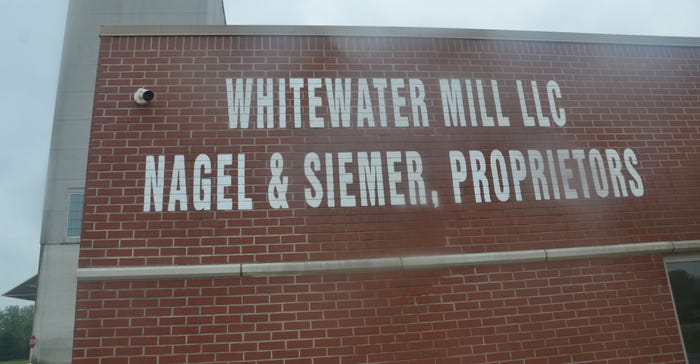
What would you expect to see if you had the chance to tour a flour mill that turns wheat into flour and various byproducts? Most people would ask for a mask, not for protection from COVID-19, but due to the dust they would expect to see in the mill. They might also expect to see lots of employees scurrying here and there, and wheat scattered on the floor around the equipment.
You don’t need a mask for dust protection if you tour the Siemer flour mill at West Harrison, Ind. And on a normal day, you will be hard-pressed to find any flour particles or wheat grains inside the plant. You won’t find a lot of people inside either — only a crew that makes sure the mostly automated machinery is doing its job. What you will find are clean floors, shiny metal tubes running flour and wheat byproducts to the correct locations, a sophisticated control room and some very efficient machinery.
Siemer Milling Co. dates to 1882. Today, it’s headquartered in Teutopolis, Ill., with a flour mill located there, in West Harrison and in Hopkinsville, Ky., where lots of wheat from southwestern Kentucky is processed.
Dawn Schuman, grain merchandiser for the West Harrison mill, explains that it was built and opened in 2015. It replaced a joint operation with another company that was originally located in Cincinnati, Ohio.
“One of the main uses for flour we produce here is breading for chicken nuggets,” Schuman says. “The other company has a separate operation next door to us that adds spices and other things to our flour, and produces breading for chicken nuggets for several large brands.”
The type of wheat is what determines how the flour can be used, she explains. Although they bring in some red wheat to make certain products, most of the wheat milled at West Harrison is soft red winter wheat, grown in southeastern Indiana and southwestern Ohio. Besides breading, it’s used to make specialty convenience foods, cakes, flours and even pretzels.
“We pride ourselves on producing a quality product, and keeping communications open with both our farmers whom we buy wheat from and the customers who buy our flour,” Schuman says. “We have field days where we educate people with companies who buy from us about what we do. We like to get them on farms to see wheat from the beginning, and then let them tour the mill to see the attention to quality and detail.”
You may be a wheat grower. If not, you’re likely an end consumer. Join this virtual tour and learn about wheat and flour from the miller’s and buyer’s perspective.
About the Author(s)
You May Also Like




